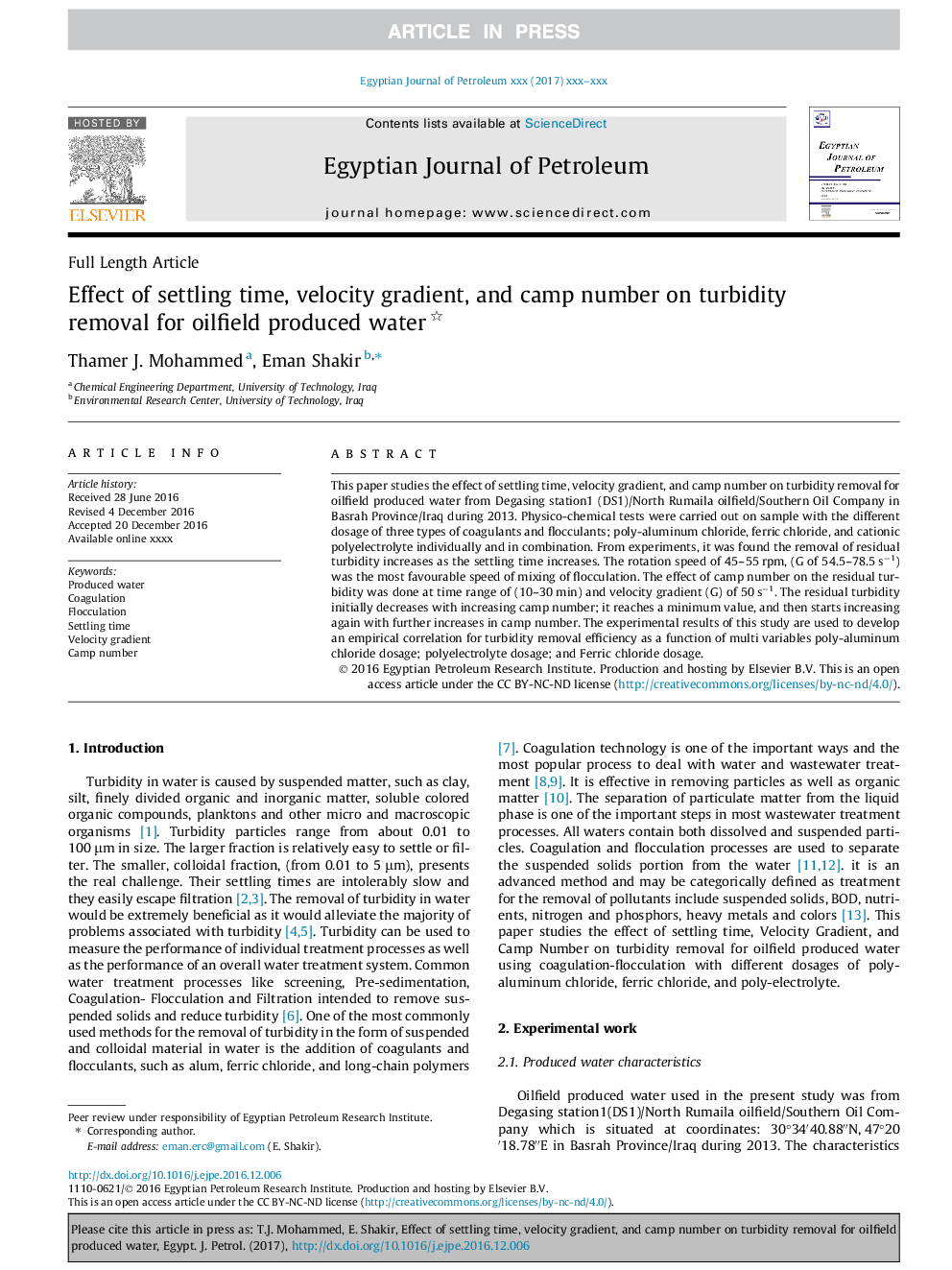| Article ID | Journal | Published Year | Pages | File Type |
|---|---|---|---|---|
| 8127703 | Egyptian Journal of Petroleum | 2018 | 6 Pages |
Abstract
This paper studies the effect of settling time, velocity gradient, and camp number on turbidity removal for oilfield produced water from Degasing station1 (DS1)/North Rumaila oilfield/Southern Oil Company in Basrah Province/Iraq during 2013. Physico-chemical tests were carried out on sample with the different dosage of three types of coagulants and flocculants; poly-aluminum chloride, ferric chloride, and cationic polyelectrolyte individually and in combination. From experiments, it was found the removal of residual turbidity increases as the settling time increases. The rotation speed of 45-55Â rpm, (G of 54.5-78.5Â sâ1) was the most favourable speed of mixing of flocculation. The effect of camp number on the residual turbidity was done at time range of (10-30Â min) and velocity gradient (G) of 50Â sâ1. The residual turbidity initially decreases with increasing camp number; it reaches a minimum value, and then starts increasing again with further increases in camp number. The experimental results of this study are used to develop an empirical correlation for turbidity removal efficiency as a function of multi variables poly-aluminum chloride dosage; polyelectrolyte dosage; and Ferric chloride dosage.
Related Topics
Physical Sciences and Engineering
Energy
Energy (General)
Authors
Thamer J. Mohammed, Eman Shakir,
